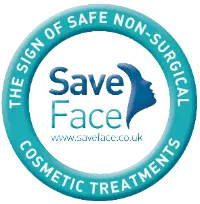There are a number of medical conditions and or medicines that may affect the decision to treat or the treatment plan. A full medical history and assessment of your expectations is necessary in advance of any decision to treat. With any injectable treatment; Treatment is not recommended if you are suffering from any skin infection in or near the treatment area or are unwell in any way (even a cold). If you have previously experienced allergic reactions to any dermal filler or local anaesthetic. If you are taking any medicines which affect bleeding, such as aspirin or warfarin. If you are taking steroids or have autoimmune disease. If you have any bleeding disorders. If you are undergoing chemotherapy. If you suffer from a poorly controlled medical condition. If you are pregnant or breastfeeding. If you are currently or have recently completed a course of Roacutane (Isotretinoin acne treatment) in the last 18 months.
Caution Injections on the face can trigger the cold sore virus. If you are a sufferer, you must advise your clinician in advance of treatment. If you are planning to attend a special event when a bruise, should it occur, would be unacceptable to you. Some over the counter medicines and supplements can also affect bleeding (make you more prone to bruising) as can alcohol which should be avoided the day before and after treatment. Vigorous exercise, sun exposure, sun beds, sauna should be avoided for 48 hours, or as advised by your clinician, after treatment.
If, having had treatment, you are at all concerned about symptoms you were not expecting or not happy with, please contact the practitioner for advice. If necessary an appointment will be made for you to be see.
If you are at all concerned about symptoms you were not expecting or not happy with, please contact the practitioner for advice. If necessary an appointment will be made for you to be seen.






